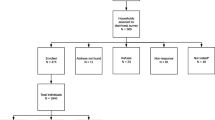Abstract
Despite increased primary care services, diarrhoeal disease is a major contributor to morbidity experienced in Australia Aboriginal communties. Most available data is based on hospital admissions, and little is known about community incidence and attitudes. A review of clinic records provides evidence for a minimum of 1.24 episodes/year in children below five years. A survey of children in the community school identified 51% who had experienced diarrhoea in the previous two weeks, none of whom presented to the clinic. Diarrhoea without abdominal pain is not considered serious enough to seek treatment. A questionnaire confirmed that the community perceived diarrhoea as a major problem. Conventional preventive of treatment measures will not, by themselves, improve the situation and a substantial commitment by the community is required if the incidence of diarrhoea is to be reduced. Therefore it is proposed that the community should be actively involved in designing, implementing and evaluating future interventions.
Similar content being viewed by others
References
Berry R.J. and Gracev M. (1981): Diarrhoeal disease in Aboriginal and non-Aboriginal infants and young children in Western Australia. - Med. J. Aust., 1: 479–482.
Blum D. and Feachern R.G. (1983): Measuring the impact of water supply and sanitation investments on diarrhoeal diseases: problems of methodology. -Int. J. Epidemiol., 12: 357–365.
Cockington R.A. (1980): Growth of Australian Aboriginal children related to social circumstances.- Aust. N.Z. J. Med., 10: 199–208.
Hoyle V., Yunnus M. and Chen L.C. (1980): Breast feeding and food intake among children with acute diarrhoeal disease. - Am. J. Clin. Nutr., 33: 2365–2371.
Koopman J.S., Turkish U.J., Monto A.S., GouveaV., Srivastava S. and Isaacson R.E. (1984): Patterns and etiology of diarrhoea in three clinical setting.- Am. J. Epidemiol., 119: 114–123.
Levine R.J., Khan M.R., D'Souza S. and Nalin D.R. (1976): Failure of sanitary wells to protect against cholera and other diarrhoeas in Bangladesh. -Lancet, 2: 85–89.
Rowland M.G.M., Cole T.J. and Whitehead R.G. (1977): A quantitative study into the role of infection in determining nutritional status in Gambian village children. - Brit. J. Nutr., 37: 441–450.
Sullivan P., Woodward W.E., Pickering L.K. and DuPont H.L. (1984): Longitudinal study of occurrence of diarrhoeal disease in day care centres. -Am. J. Public Health, 74: 987–991.
Treatment and prevention of acute diarrhoea (1985): Guidelines for the trainers of health workers. Geneva, World Health Organisation.
Trigger D.S., Anderson C., Lincoln R.A. and MatisC.E. (1983): Mortality rates in 14 Queensland Aboriginal reserve communities: - association with 10 socio environmental variables. - Med. J. Aust., 1: 361–365.
WHO Scientific Working Group (1980): Environmental Health and Diarrhoeal Disease Prevention. WHO/DDC/80.5.
Author information
Authors and Affiliations
Rights and permissions
About this article
Cite this article
Ratnaike, R.N., Collings, M., Dorward, S.K. et al. Diarrhoeal disease in an aboriginal community. Eur J Epidemiol 3, 312–315 (1987). https://doi.org/10.1007/BF00149742
Issue Date:
DOI: https://doi.org/10.1007/BF00149742




